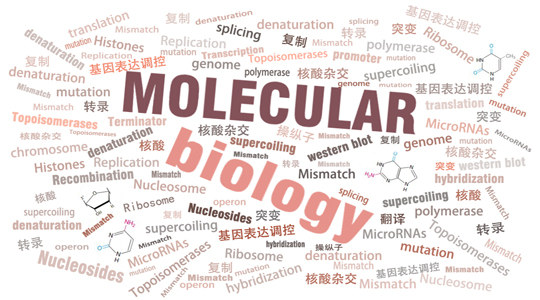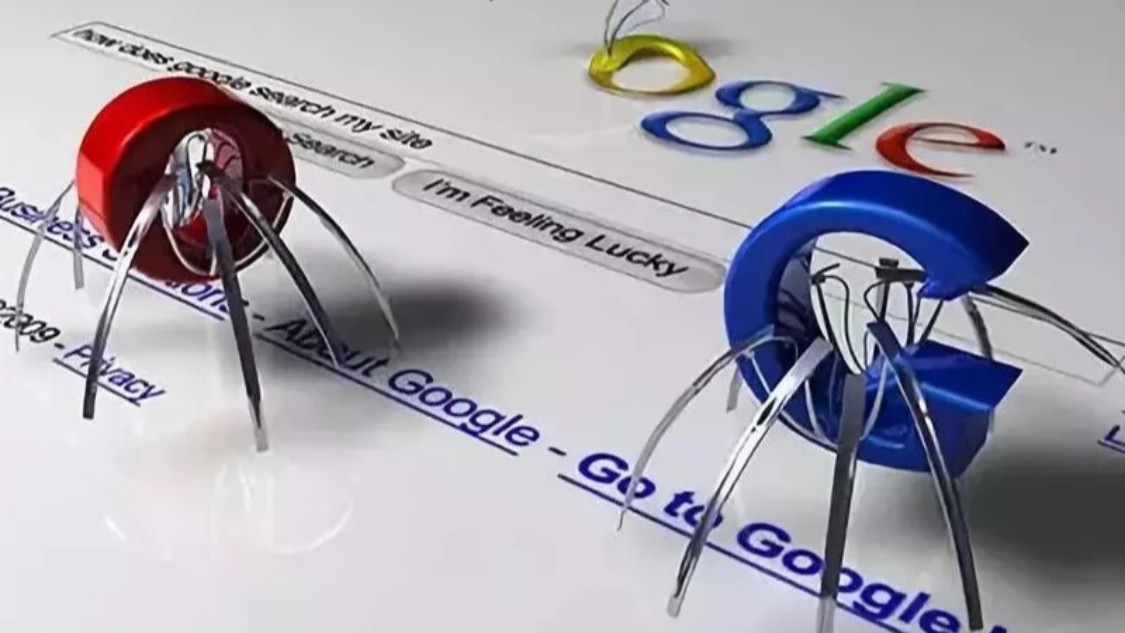
当前课程知识点:Basic Molecular Biology > Chapter 1 The material basis of genetic information > C1-Lecture 3 Amazing DNA double helix > Video C1-L3 Amazing DNA double helix
返回《Basic Molecular Biology 》慕课在线视频课程列表
返回《Basic Molecular Biology 》慕课在线视频列表
尽管Friedrich Miescher
发现了DNA
Frederick Griffith
Oswald Avery
先后证明了DNA是遗传物质
但这神秘的DNA
到底长什么样子
在很长一段时间内
一直困扰着人们
随着
X射线晶体衍射技术的发展
一位伟大的女性
Rosalind Elsie Franklin
在伦敦大学国王学院
与她的同事莫里斯 威尔金斯
对瑞士科学家鲁道夫 席格纳
无偿提供的小牛胸腺DNA样品
进行了化学结构的研究
这些DNA样品干燥的时候
呈细小的针簇状
但一旦遇潮就会变成
黏胶状的物质
后来富兰克林和威尔金斯的学生
葛斯林一起发现这是DNA的
两种型态
在潮湿状态下
DNA的纤维会变细变长 是A型
而在干燥的状态下
纤维会变粗变短 是B型
1952年5月富兰克林
与威尔金斯的学生葛斯林
一起经过了长时间的研究后
获得了一张被称为
照片51号的
B型DNA X射线晶体衍射图
这张照片被
X射线晶体衍射先驱之一的
约翰 贝尔那形容为
几乎是有史以来最美的
一张X射线照片
但是富兰克林并没有
发表她的研究成果
因为她同时在研究的
A型DNA螺旋
数据还不足以支持螺旋的模型
因为富兰克林不愿意
把发现DNA结构的成绩
拱手让于他人
她不同意把照片51号
给沃森和克里克看
而在1953年1月威尔金斯
在富兰克林不知情的情况下
把照片51号拿给沃森过目
威尔金斯本以为沃森和克里克
因为早期他们认为
DNA是三股螺旋的结构
而被批评之后
早已完全不再进行
DNA结构的研究
不想这张照片却使得沃森
和克里克重新征得上司的同意
并在2月4号重新开启
对DNA模型的构建研究
并最终在1953年4月25日的
Nature杂志上发表了标志着
分子生物学诞生的重要论文
文中沃森和克里克仅仅提到
他们的研究受到
富兰克林和威尔金斯的启示
但并没有详细描述
甚至都没有致谢
而威尔金斯和富兰克林也在
同期杂志上发表了他们的论文
也只是说他们的数据
和沃森克里克的模型相符
1956年9月
富兰克林在腹部发现了两颗肿瘤
并在1958年4月16日
在英国与世长辞
1963年
沃森 克里克和威尔金斯
因为DNA双螺旋结构的发现
而获得了诺贝尔生理和医学奖
而我们的
富兰克林却与此永远无缘了
刚刚你听到了DNA双螺旋结构
中隐藏的曲折故事
那么现在让我们来看看
双螺旋结构中蕴含的秘密吧
到底是什么在维持着
双螺旋的舞动呢
你可能还记得Erwin Chargaff
发现了在不同生物中
A T的摩尔比相同
G C的摩尔比也相同
后来人们发现
在不同碱基对之间的
供氢受体和配氢受体之间可以
通过氢键形成微弱的相互作用
A-T配对和G-C配对
是比较常见的两种
又称作Watson-Crick配对
或者互补配对
那么这也解释了Chargaff的发现
这两种配对方式使得
相对的两个核苷酸中戊糖
1’位碳之间的距离保持大致相等
但是戊糖环的方向却恰恰相反
AT和CG配对是
常见的两种配对形式
那也就是说还有不常见的喽
是的除了这两种常见的配对方式
的确
还有一些不太常见的碱基配对
比如说G-T之间
也可以形成两个氢键
而类似的G和U之间
也可以形成稳定的氢键配对
这些氢键配对虽然在DNA结构中不太常见
但是对RNA分子的二级结构
以及核酸与蛋白质的相互作用中
却是有很重要的作用的
虽然氢键属于一种非常弱的
分子间相互作用
但是考虑到核酸是一个由
成百上千个碱基对
组成的高聚物分子
两条链之间众多的氢键对于维持
DNA双链的结构
就显得不容忽视了
除了氢键之外
还有一种重要的分子间相互作用
疏水作用也参与了
DNA双螺旋结构的稳定
我们都知道碱基环本身是
具有一定疏水性的基团
当DNA双链通过氢键
进行碱基配对之后
碱基平面之间会通过疏水作用
把水分子排挤出去
层层叠加在一起
我们把这种相互作用
又叫做碱基堆积
相邻的两个碱基长轴
并非是平行的
而是会形成一个
大约36度的夹角
这就使得DNA双链结构
并不是一个平面的梯状
而是会螺旋起来形成
一个立体结构了
有了氢键配对
和碱基堆积力的相互作用
DNA分子就形成一种
由两条反向平行链相互缠绕
形成的右手螺旋结构
碱基对形成螺旋的疏水核心
而螺旋的外周则是由
亲水的糖磷酸骨架所包围的
你别忘了
两条磷酸骨架链是带负电的
所以DNA双链之间
还存在一定的静电斥力作用
不过
如果DNA所处的溶液环境中
具有一定的离子强度
带正电的离子会
被吸附在磷酸基团周围
形成一定的屏蔽作用
从而减弱双链之间的相互排斥
不过如果离子强度很低的话
比如说在超纯水中
那么双条链之间的静电斥力
就不容忽视了
这就是我们迷人的DNA双螺旋
一个完整的DNA螺旋中含有
10.5个碱基对 螺距约为3.4nm
其迷人之处在于两条链方向相反
序列互补
任何时候你只要获得
任意一条链的序列
就可以获得他所蕴含的全部信息
碱基配对后由于两条糖苷键
并不在一条直线上
而是存在一定的夹角
因此DNA双螺旋就形成了
一个大沟和一个小沟
DNA大沟和小沟中的N和O
都有和其他基团形成
氢键配对的能力
但是由于大沟中存在的这些功能基团比较多
排布也比较复杂
所以其蕴含的
序列特异性信息会比较丰富
这也使得DNA大沟成为DNA
与蛋白质进行序列特异性
相互识别的重要位点
而小沟中可以形成
氢键配对的功能基团比较少
而且排布也比较简单
所以小沟中蕴含的
序列特异性信息会比较少
但这并不意味着没有蛋白质可以
和DNA的小沟发生相互作用哦
嗯 我记得刚刚讲的A型和B型
这又是什么型呢
我们刚刚描述的这些
10.5个碱基对3.4nm的螺距
说的都是B型DNA
B型DNA是细胞中生理条件下
DNA的主要结构
但是当如果溶液中水份下降
或者盐离子浓度升高时
DNA会从B型变成A型的状态
A型DNA双螺旋
较B型更为短粗
它的大沟变得狭窄而深
小沟呢则变得比较浅
A型双螺旋中
每一个螺距有11个碱基对
在正常的生理条件下
A型双螺旋并不常见
但是如果RNA分子
形成二级结构的话
由于其戊糖上2’位羟基的存在
它通常形成的是A型双螺旋结构
1979年
Alexander Rich和他的同事发现
交替出现GC序列的DNA片段
还可以在生理条件下
形成一种神奇的左手螺旋结构
由于其糖磷酸骨架
呈现一种之字形
于是被命名为Z型DNA双螺旋
Z型DNA显得比较细长
其每个螺旋中具有12个碱基对
小沟非常的窄而深
但大沟非常浅
看起来似乎象不存在一样
体外环境下
如果溶液中为高盐离子浓度
或者存在乙醇的时候
可以形成Z型的DNA双螺旋
而在生理条件下
Z型DNA双螺旋中的胞嘧啶
常常是被甲基化的
5-甲基胞嘧啶属于基因组
表观遗传修饰中的一种
往往和基因表达沉默有关系
所以生理条件下
Z型DNA的存在
可能与基因表达调控有关
注意哦
B型和A型的DNA
是右手螺旋结构
而Z型的DNA是左手螺旋结构
那Z型的左手螺旋可怎么跟
B型的右手螺旋连接过渡啊
你这个问题问的不错
说明你动脑筋了
这个问题的确
也困扰了生物学家很久
直到2005年科学家们
对B-Z连接处的
DNA结构进行了解析
发现这个地方
只有一个碱基对的破坏
碱基平面翻出了
糖磷酸骨架链的外侧
这也说明DNA双螺旋的结构
还是具有相当的灵活性的
除了双螺旋结构
一些具有特异性序列的
DNA片段还可以形成一些
其他的二级结构
比如串联排列的重复序列可以由于
DNA双链的相对滑动
而在单链上形成凸起或者环
而反向重复序列则可以形成
双链的十字交叉结构
具有镜像对称结构的序列
嘌呤-嘧啶延伸链
还可以形成三股螺旋结构
而在线性DNA的末端
我们知道的端粒部分
往往还可以有富含G的序列
形成四股螺旋
这些不太常见的DNA二级结构
的异常发生有时
也会导致一些疾病
比如说我们人类的
弗里德希氏共济失调症
这是一种常染色体隐性遗传的
神经系统疾病
表现为进行性的步态不稳
以及全身笨拙等共济失调症状
和心脏膨大等
该疾病的致病基因
X25基因定位在9号染色体上
这个基因第1个内含子当中
有一段不太稳定的GAA序列
正常的个体大概
重复8-30次左右
但是患病的人却可以在这里
重复1000次以上
过度重复的GAA序列
形成DNA三股螺旋的结构
从而影响了该致病基因
frataxin共济蛋白的转录
导致疾病的发生
法国的生物技术公司
AAVLife公司在2014年宣布
已经获得了1200万美元的投资
用于开发弗里德希氏共济失调的
基因敲除疗法
他们希望能够通过
腺病毒类病毒载体
将正常的共济失调蛋白基因
转入人体去取代突变的基因
希望这种疗法能够让
患者的X25基因
恢复正常的迷人的双螺旋状态吧
- C1-Lecture 1 The past and present journey of molecular biology
--Key points C1-L1 The past and present journey of molecular biology
--Video-C1-L1 The past and present journey of molecular biology
--Lecture 1-Homework
-C1-Lecture 2 The nature of genetic material
--Key points C1-L2 The nature of genetic material
--Video-C1-L2 The nature of genetic material
--C1-Lecture 2-Homework
-C1-Lecture 3 Amazing DNA double helix
--Key points C1-L3 Amazing DNA double helix
--Video C1-L3 Amazing DNA double helix
--C1-Lecture 3-Homework
-C1-Lecture 4 Supercoiled DNA
--Key points C1-L4 Supercoiled DNA
--C1-Lecture 4-Homework
-C1-Lecture 5 Denaturation, renaturation and hybridization
--Key points C1-L5 Denaturation, renaturation and hybridization
--Video C1-L5 Denaturation, renaturation and hybridization
--C1-Lecture 5-Homework
-C1-Lecture 6 Nucleic acids extraction and gel electrophoresis
--Key points C1-L6 Nucleic acid extraction and gel electrophoresis
--Video C1-L6 Nucleic acid extraction and gel electrophoresis
--C1-Lecture 6-Homework
-Chapter 1 Test
-Learning resources
-- References
-C2-Lecture 1 Genome does not equal to chromosome
--Key points C2-L1 Genomes are not equal to chromosomes
--Video C2-L1 Genomes are not equal to chromosomes
--Discussion C2-L1 Genomes are not equal to chromosomes
--C2-Lecture 1-Homework
-C2-Lecture 2 Nucleosomes and their Assembly
--Key points C2-L2 Nucleosomes and their Assembly
--Video C2-L2 Nucleosomes and their Assembly
--Discussion C2-L2 Nucleosomes and their Assembly
--C2-Lecture 2-Homework
-C2-Lecture 3 Higher order chromatin structure
--Key points C2-L3 Higher order chromatin structure
--Video C2-L3 Higher order chromatin structure
--Discussion C2-L3 Higher order chromatin structure
--C2-Lecture 3-Homework
-C2-Lecture 4 Chromatin modification and remodeling
--Key points C2-L4 Chromatin modification and remodeling
--Video C2-L4 Chromatin modification and remodeling
--Discussion C2-L4 Chromatin modification and remodeling
--C2-Lecture 4-Homework
-Chapter 2 Tests
-Learning resources
-C3-Lecture 1 Semiconservative DNA replication
--Key points C3-L1 Semiconservative DNA replication
--Video C3-L1 Semiconservative DNA replication
--Discussion C3-L1 Semiconservative DNA replication
--C3-Lecture1 Homework
-C3-Lecture 2 The mechanism of DNA polymerase
--Key points C3-L2 The mechanism of DNA polymerase
--Video C3-L2 The mechanism of DNA polymerase
--Discussion C3-L2 The mechanism of DNA polymerase
--C3-Lecture 2-Homework
-C3-Lecture 3 Process of DNA replication
--Key points C3-L3 Process of DNA replication
--Video C3-L3 Process of DNA replication
--Discussion C3-L3 Process of DNA replication
--C3-Lecture 3-Homework
-C3-Lecture 4 Regulation of DNA replication initiation
--Key points C3-L4 Regulation of DNA replication initiation
--Video C3-L4 Regulation of DNA replication initiation
--Discussion C3-L4 Regulation of DNA replication initiation
--C3-Lecture 4-Homework
-C3-Lecture 5 The end replication problem and telomere
--Key points C3-L5 The end replication problem and telomere
--Video C3-L5 The end replication problem and telomere
--Discussion C3-L5 The end replication problem and telomere
--C3-Lecture 5-Homework
-C3-Lecture 6 Let’s “cook” DNA
--Video C3-L6 Let’s “cook” DNA
--Discussion C3-L6 Let’s “cook” DNA
--C3-Lecture 6-Homework
- Chapter 3 Tests
-Learning resources
-C4-Lecture 1 Replication errors and the mismatch repair system
--Key points 4-1 Replication errors and the mismatch repair system
--Video 4-1 Replication errors and the mismatch repair system
--Discussion 4-1 Replication errors and the mismatch repair system
--C4-Lecture 1-Homework
-C4-Lecture 2 DNA damage
--C4-Lecture 2-Homework
-C4-Lecture 3 DNA Repair
--C4-Lecture 3-Homework
-C4-Lecture 4 DNA Homologous Recombination
--Key points 4-4 DNA Homologous Recombination
--Video 4-4 DNA Homologous Recombination
--Discussion 4-4 DNA Homologous Recombination
--C4-Lecture 4-Homework
-C4-Lecture 5 Changing the natural gene sequences
--Key points 4-5 Changing the natural gene sequences
--Video 4-5 Changing the natural gene sequences
--Discussion 4-5 Changing the natural gene sequences
-Chapter 4 test
- Learning resources
-C5-Lecture 1 RNA polymerase
--Key points 5-1 RNA polymerase
--Discussion 5-1 RNA polymerase
--C5-Lecture 1-Homework
-C5-Lecture 2 Transcription process in prokaryotes
--Key points 5-2 Transcription process in prokaryotes
--Video 5-2 Transcription process in prokaryotes
--Discussion 5-2 Transcription process in prokaryotes
--C5-Lecture 2-Homework
-C5-Lecture 3 Transcriptional regulation in bacterial I: Lac operon
--Key points 5-3 Transcriptional regulation in bacterial I: Lac operon
--Video 5-3 Transcriptional regulation in bacterial I: Lac operon
--Discussion 5-3 Transcriptional regulation in bacterial I: Lac operon
--C5-Lecture 3-Homework
-C5-Lecture 4 Transcriptional regulation in bacterial II: Tryptophan operon
--Key points 5-4 Transcriptional regulation in bacterial II: Tryptophan operon
--Video 5-4 Transcriptional regulation in bacterial II: Tryptophan operon
--Discussion 5-4 Transcriptional regulation in bacterial II: Tryptophan operon
--C5-Lecture 4-Homework
-Chapter 5 Test
-Learning resources
-Lecture 1 Eukaryotic RNA polymerase and promoter
--Key points 6-1 Eukaryotic RNA polymerase and promoter
--Video 6-1 Eukaryotic RNA polymerase and promoter
--Discussion 6-1 Eukaryotic RNA polymerase and promoter
--C6-Lecture 1-Homework
-Lecture 2 Transcription process in eukaryotic cell
--Key points 6-2 Transcription process in eukaryotic cell
--Video 6-2 Transcription process in eukaryotic cell
--Discussion 6-2 Transcription process in eukaryotic cell
--C6-Lecture 2-Homework
-Lecture 3 Transcription factors of eukaryotic cell
--Key points 6-3 Transcription factors of eukaryotic cell
--Video 6-3 Transcription factors of eukaryotic cell
--Discussion 6-3 Transcription factors of eukaryotic cell
--C6-Lecture 3-Homework
-Lecture 4 Epigenetic Regulation of gene expression
--Key points 6-4 Epigenetic Regulation of gene expression
--Video 6-4 Epigenetic Regulation of gene expression
--Discussion 6-4 Epigenetic Regulation of gene expression
--C6-Lecture 4-Homework
-Chapter 6 Test
-Learning resources
-Lecture 1 RNA splicing
--C7-Lecutre 1-Homework
-Lecture 2 Cotranscriptional processing of nuclear pre-mRNA
--Key points 7-2 Cotranscriptional processing of nuclear pre-mRNA
--Video 7-2 Cotranscriptional processing of nuclear pre-mRNA
--Discussion 7-2 Cotranscriptional processing of nuclear pre-mRNA
--C7-Lecture 2-Homework
-Lecture 3 One gene one protein? Alternative RNA splicing
--Key points 7-3 One gene one protein? Alternative RNA splicing
--Video 7-3 One gene one protein? Alternative RNA splicing
--Discussion 7-3 One gene one protein? Alternative RNA splicing
--C7-Lecture 3-Homework
-Lecture 4 “Seeing” RNA
-C7-Lecture 4-Homework
-Chapter 7 Test
-Learning Resources
-Lecture 1 Genetic codons and ribosome
--Key points 8-1 Genetic codons and ribosome
--Video 8-1 Genetic codons and ribosome
--Discussion 8-1 Genetic codons and ribosome
--C8-Lecture 1-Homework
-Lecture 2 Process of translation
--Key points 8-2 Process of translation
--Video 8-2 Process of translation
--Discussion 8-2 Process of translation
--C8-Lecture 2-Homework
-Lecture 3 Regulation of gene expression at Translational level
--Key points 8-3 Regulation of gene expression at Translational level
--Video 8-3 Regulation of gene expression at Translational level
--Discussion 8-3 Regulation of gene expression at Translational level
--C8-Lecture 3-Homework
-Lecture 4 Looking for your protein
--Key points 8-4 Looking for your protein
--Video 8-4 Looking for your protein
-Chapter 8 Test
-Learning resources
--SDS-PAGE
-Final Exam



